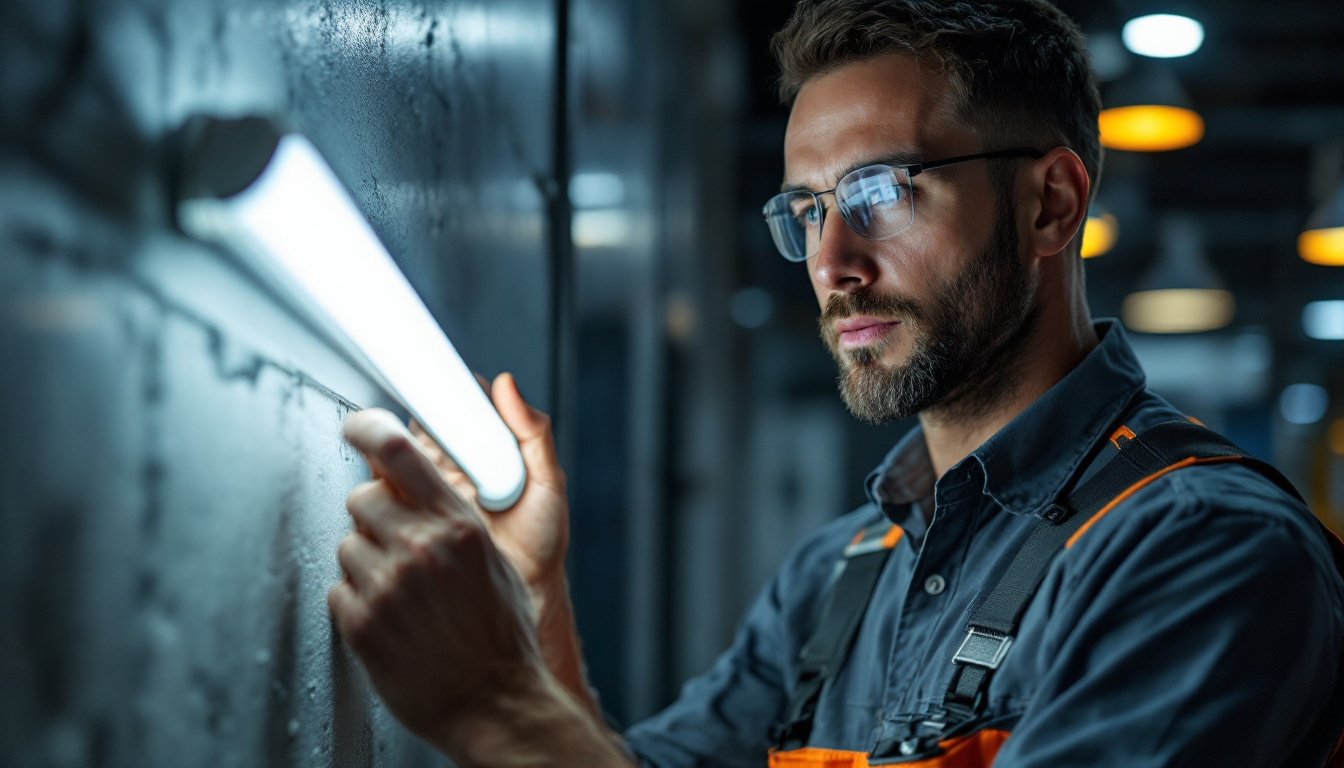
In the ever-evolving world of lighting design, LED studio lights have emerged as a game-changer for lighting contractors. Their versatility, energy efficiency, and advanced technology have made them a staple in studios, theaters, and various production environments. Understanding the latest trends in LED studio lights is crucial for lighting contractors looking to stay competitive and meet the demands of modern clients.
One of the most significant trends in LED studio lighting is the growing emphasis on energy efficiency and sustainability. As environmental concerns continue to rise, clients are increasingly seeking solutions that minimize energy consumption while maximizing output. This shift is not just a passing trend; it reflects a broader societal movement towards greener practices across various industries. The adoption of LED technology is a key component in this transition, as it allows studios to produce high-quality work while also being mindful of their environmental impact.
LED lights consume significantly less energy compared to traditional incandescent or halogen lights. This reduction not only lowers electricity bills but also lessens the carbon footprint of a production. For lighting contractors, this means offering clients a solution that aligns with their sustainability goals while delivering high-quality lighting. Furthermore, the energy savings associated with LED lighting can be substantial, often resulting in a return on investment that justifies the initial costs. Many studios are now able to allocate those savings towards other creative aspects of production, enhancing their overall output and innovation.
Another advantage of LED technology is its impressive lifespan. LED lights can last up to 50,000 hours or more, far outpacing traditional lighting options. This longevity translates into lower maintenance costs and less frequent replacements, making it an attractive option for studios and production companies. Additionally, the durability of LED fixtures means they are less prone to breakage, which is particularly beneficial in fast-paced production environments where equipment is frequently moved and adjusted. The extended lifespan also contributes to a reduction in waste, as fewer lights end up in landfills, further supporting sustainability efforts.
In addition to energy efficiency and longevity, LED lights offer enhanced color accuracy, which is crucial for achieving the desired look in film and photography. With a high Color Rendering Index (CRI), LED lights can reproduce colors more faithfully than traditional lighting, ensuring that the final product reflects the true vision of the creators. This capability is particularly important in industries where color grading and visual aesthetics play a significant role, such as fashion, art, and advertising. As studios increasingly prioritize visual quality, the demand for LED lighting solutions that deliver exceptional color performance continues to grow.
Moreover, many LED lighting systems now come equipped with smart technology features that allow for remote control and automation. This integration enables lighting designers to adjust brightness, color temperature, and even create dynamic lighting effects from a distance, streamlining the production process. As studios embrace more advanced technologies, the ability to manipulate lighting in real-time enhances creativity and flexibility during shoots. This trend not only improves efficiency but also opens up new possibilities for artistic expression, allowing filmmakers and photographers to experiment with lighting in ways that were previously cumbersome or impossible.
As technology advances, so do the capabilities of LED studio lights. Smart lighting technology is becoming increasingly popular, allowing for more control and customization in lighting design.
Many modern LED studio lights come equipped with smart features that enable remote control and automation. This allows lighting contractors to adjust lighting settings from a distance, making it easier to create the perfect ambiance for any scene. Whether it’s adjusting brightness, color temperature, or even programming specific lighting cues, smart technology enhances the overall efficiency of the lighting design process.
Smart LED lights can also integrate with other technologies, such as sound and video systems. This integration allows for synchronized lighting effects that can elevate the production value of any project. Lighting contractors should be aware of these capabilities to provide clients with comprehensive lighting solutions that enhance their overall production experience.
Color quality is a critical aspect of lighting design, and advancements in LED technology have significantly improved this area. Contractors should be well-versed in the latest trends regarding color quality and tunability.
The Color Rendering Index (CRI) measures a light source’s ability to accurately reproduce colors. LEDs with a high CRI (90 and above) are increasingly favored in studio settings, as they provide more accurate color representation. This is particularly important in film and photography, where true-to-life colors are essential for achieving the desired aesthetic.
Another trend is the ability to adjust color temperature. Many LED studio lights now offer tunable white light options, allowing lighting contractors to shift between warm and cool tones. This flexibility enables professionals to create various moods and atmospheres, catering to the specific needs of each project.
As studios and production environments evolve, the demand for compact and lightweight lighting solutions has increased. LED studio lights are leading the way in this trend, offering powerful performance without the bulk.
Compact LED lights are easier to transport and set up, making them ideal for on-location shoots or productions with limited space. Lighting contractors can benefit from this trend by providing clients with versatile lighting options that can be easily adjusted to fit various settings.
In addition to portability, the lightweight nature of LED lights allows for innovative mounting solutions. Whether it’s using clamps, grids, or other mounting systems, contractors can maximize space while ensuring optimal lighting coverage. This adaptability is essential for meeting the diverse needs of clients.
Creativity is at the heart of lighting design, and LED technology is enabling lighting contractors to explore innovative effects that were once challenging to achieve.
With the ability to change colors and brightness quickly, LED studio lights can create dynamic lighting effects that enhance storytelling in film and theater. From dramatic fades to vibrant color washes, the versatility of LED lights allows for a wide range of creative possibilities.
Some advanced LED systems support pixel-mapping, allowing for intricate visual effects that can be synchronized with music or other elements of a production. This capability can transform a simple lighting setup into an immersive experience, captivating audiences and enhancing the overall impact of the performance.
While the benefits of LED studio lights are clear, understanding the cost implications is essential for lighting contractors. As with any technology, the initial investment can vary widely based on features and capabilities.
Although LED lights may have a higher upfront cost compared to traditional lighting options, the long-term savings in energy consumption and maintenance should be considered. Lighting contractors can present a compelling case to clients by highlighting the return on investment (ROI) associated with LED technology.
For clients with tighter budgets, there are many affordable LED options available that still provide excellent performance. Contractors should stay informed about the latest budget-friendly products that do not compromise on quality, ensuring they can offer clients a range of choices that fit their financial constraints.
Every client has unique needs and preferences when it comes to lighting. Understanding these requirements and offering customized solutions is a key trend that lighting contractors should embrace.
Lighting contractors should work closely with clients to understand their vision and requirements. This may involve creating custom lighting setups that cater to specific artistic or functional needs. By offering tailored solutions, contractors can build stronger relationships with clients and enhance their reputation in the industry.
Educating clients about the benefits and capabilities of LED studio lights is equally important. Providing information on how to use and maintain the lighting effectively can empower clients and lead to greater satisfaction with the final results. This approach not only fosters trust but also positions contractors as knowledgeable experts in the field.
As technology continues to advance, several future trends in LED studio lighting are worth keeping an eye on. Staying ahead of these trends can provide lighting contractors with a competitive edge.
The integration of artificial intelligence (AI) and machine learning into lighting design is on the horizon. These technologies could enable more intelligent lighting systems that adapt to the environment and user preferences in real-time, enhancing the overall experience for both clients and audiences.
The Internet of Things (IoT) is set to revolutionize the way lighting systems are controlled and monitored. Future LED studio lights may feature enhanced connectivity options, allowing for seamless integration with other smart devices and systems. This connectivity can lead to more efficient lighting management and improved user experiences.
LED studio lights are at the forefront of modern lighting design, offering numerous benefits that lighting contractors must understand to remain competitive. From energy efficiency and smart technology to innovative effects and customization, the trends in LED lighting are shaping the future of the industry.
By staying informed about these trends and adapting to the changing landscape, lighting contractors can provide clients with cutting-edge solutions that meet their diverse needs. Embracing the latest advancements in LED technology not only enhances the quality of lighting design but also positions contractors as leaders in the field, ready to tackle the challenges of tomorrow’s productions.
Ready to elevate your lighting designs with the latest LED studio light trends? At LumenWholesale, we provide lighting contractors with the cutting-edge, spec-grade lighting products you need at prices that can’t be beaten. Say goodbye to local distributor markups and hello to our extensive selection that meets the highest industry standards. With free shipping on bulk orders, you can trust that you’re getting premium lighting solutions at the best value — all without hidden fees or compromises. Wholesale Lighting at the Best Value is just a click away. Partner with LumenWholesale today and light up your next project with confidence and affordability.

Discover how to effectively train your team in lighting with the versatile 25 Watt Type B lamp bulb.

Discover the science behind 4ft LED tube bulbs and their impact on modern lighting solutions.

Discover the key factors that distinguish top lighting contractors in the world of can lights LED retrofit.

Discover how strategic lighting installations can boost your home’s value and energy efficiency.